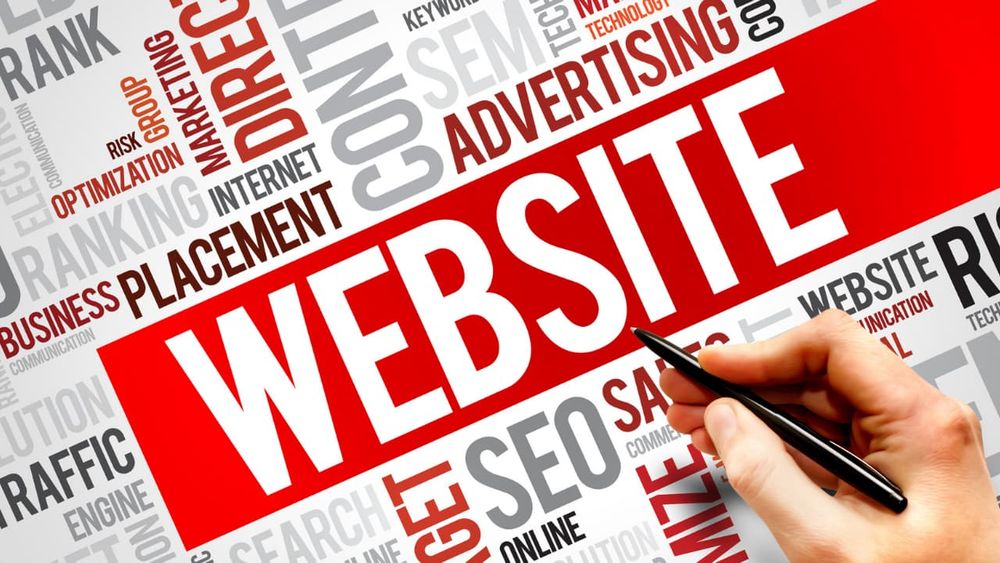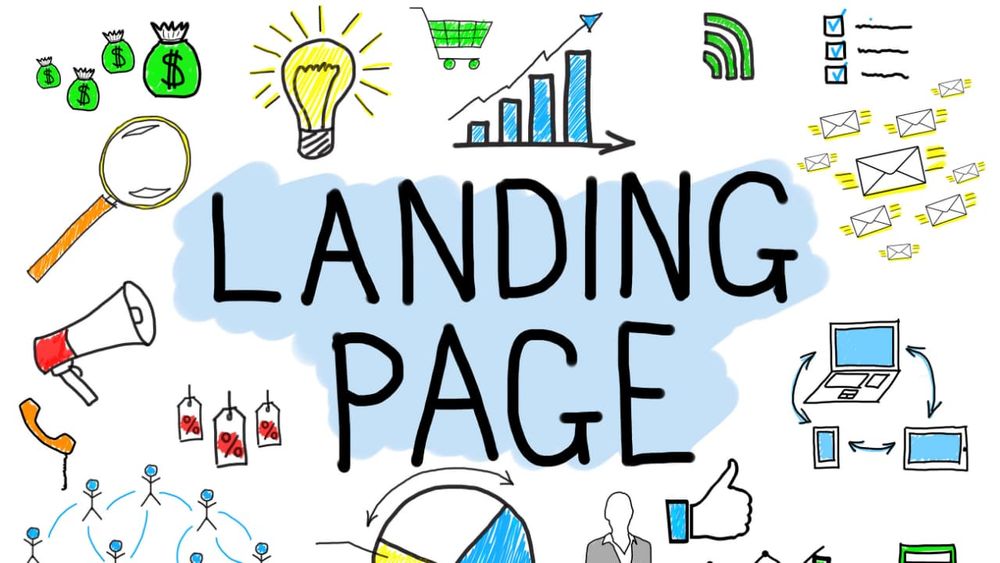The Difference Between Websites and Landing Pages
Table of Contents
- Advantages and Disadvantages of Websites and Landing Pages
- Key Features and Functions of Websites Vs Landing Pages
- Factors to Consider When Choosing Between a Website and a Landing Page
- How Websites and Landing Pages Differ in Design and User Experience
- Impact on Conversion Rates: Website Vs Landing Page
- Conclusion
If you are looking to create an online presence for your business, product, or service, you might be wondering whether you need a website or a landing page. What are the advantages and disadvantages of each option? How do they differ in terms of features, functions, design, and user experience? And most importantly, how do they impact your conversion rates?
In this blog post, we will answer these questions and help you decide which option is best for your needs. We will also provide some examples of websites and landing pages to illustrate the key differences and use cases.
Advantages and Disadvantages of Websites and Landing Pages

A website is a set of interconnected pages that provide information about your brand, offerings, values, and goals. A website usually has multiple purposes, such as educating visitors, building trust, generating leads, or selling products or services. A website can also have various functionalities, such as online ordering, customer service, login access, or a blog.
A landing page is a standalone page that focuses on a specific offer, product, or service. A landing page has one main goal: to persuade visitors to take a desired action, such as signing up for a newsletter, downloading an ebook, or buying a product. A landing page usually has minimal elements, such as a headline, a subheading, an image or video, some bullet points, and a form or button.
The advantages of having a website include:
- It can showcase your brand identity and personality
- It can provide comprehensive information about your business
- It can establish credibility and authority in your niche
- It can attract organic traffic from search engines
- It can engage visitors with different types of content and features
The disadvantages of having a website include:
- It can be costly and time-consuming to create and maintain
- It can be difficult to optimize for conversions
- It can have high bounce rates if visitors don't find what they are looking for
- It can be distracting or confusing if it has too many pages or options
The advantages of having a landing page include:
- It can increase conversions by focusing on one specific goal
- It can be easy and quick to create and test
- It can be tailored to different audiences and campaigns
- It can be optimized for performance and user experience
- It can be tracked and measured with analytics tools
The disadvantages of having a landing page include:
- It can have low traffic if it is not promoted well
- It can have low trust if it is not linked to a website or a social media profile
- It can have low relevance if it is not updated regularly
- It can have low quality if it is not designed well
Key Features and Functions of Websites Vs Landing Pages
As we mentioned earlier, websites and landing pages differ in their structure, content, functionality, and navigation. Here are some of the key features and functions of each option:
Websites:
- Have multiple pages connected through navigation menus
- Provide general information about the business, products, or services
- May contain different modules and functions, such as online ordering, customer service, login access, or a blog
- May use different types of content, such as text, images, videos, audio, or interactive elements
- May have different goals for each page, such as educating visitors, generating leads, or selling products
Landing pages:
- Have a single page with limited navigation
- Provide specific information about an offer, product, or service
- Usually have only text, images, videos, or audio elements
- Usually have only one goal for the page: to persuade visitors to take an action
- Usually have only one type of content: a persuasive copy that highlights the benefits and features of the offer
Factors to Consider When Choosing Between a Website and a Landing Page

So how do you decide whether you need a website or a landing page? Here are some factors to consider:
- Your objective: What is the main purpose of your online presence? Do you want to inform visitors about your brand and offerings? Do you want to generate leads or sales for a specific campaign? Do you want to provide a function or service to your customers? Depending on your objective, you may need either a website or a landing page.
- Your audience: Who are you trying to reach with your online presence? Do you have a broad or narrow target market? Do you have different segments or personas within your market? Do you know their needs, preferences, pain points, and motivations? Depending on your audience, you may need either a website or a landing page.
- Your budget: How much money do you have to spend on your online presence? Do you have the resources to create and maintain a website? Do you have the tools to create and test landing pages? Do you have the skills to design and optimize your online presence? Depending on your budget, you may need either a website or a landing page.
- Your timeline: How much time do you have to create and launch your online presence? Do you have a deadline or a launch date for your campaign? Do you have the flexibility to experiment and iterate on your online presence? Depending on your timeline, you may need either a website or a landing page.
How Websites and Landing Pages Differ in Design and User Experience
Another important difference between websites and landing pages is their design and user experience. Websites and landing pages have different design principles and best practices that affect how visitors perceive and interact with them. Here are some of the main differences in design and user experience:
Websites:
- Use a consistent and coherent design across all pages
- Use a clear and intuitive navigation system
- Use a responsive and adaptive design that works on different devices and screen sizes
- Use a balanced and harmonious layout that follows the grid system
- Use a contrast and hierarchy that guides the eye movement and attention of visitors
- Use a color scheme that reflects the brand identity and personality
- Use a typography that is legible, readable, and appealing
- Use a white space that creates breathing room and focus
- Use a visual content that supports the textual content and enhances the message
- Use an interactive content that engages visitors and encourages action
Landing pages:
- Use a simple and minimalist design that eliminates distractions
- Use a linear and logical flow that leads visitors to the desired action
- Use a responsive and fast design that loads quickly and works on different devices and screen sizes
- Use a single-column layout that follows the F-shaped pattern
- Use a contrast and urgency that creates interest and excitement for visitors
- Use a color scheme that matches the offer, product, or service
- Use a typography that is bold, clear, and persuasive
- Use a white space that creates emphasis and clarity
- Use a visual content that showcases the offer, product, or service and demonstrates its value
- Use an interactive content that captures visitors' information and triggers action
Impact on Conversion Rates: Website Vs Landing Page

The ultimate difference between websites and landing pages is their impact on conversion rates. Conversion rates measure how many visitors take the desired action on your online presence, such as signing up, downloading, buying, or contacting. Conversion rates are influenced by many factors, such as traffic sources, audience segments, offer quality, page design, copywriting, user experience, trust signals, social proof, testimonials, reviews, guarantees, etc.
Websites typically have lower conversion rates than landing pages because they have multiple purposes, pages, options, and distractions. Visitors may not find what they are looking for or may lose interest or trust along the way. Websites usually have conversion rates between 1% to 5%, depending on the industry, niche, product, or service.
Landing pages typically have higher conversion rates than websites because they have one specific goal, page, option, and focus. Visitors are more likely to take action if they are interested in the offer, product, or service. Landing pages usually have conversion rates between 10% to 30%, depending on the quality of the traffic, offer, design, copywriting, user experience, etc.
Conclusion
Websites and landing pages are both essential tools for creating an online presence for your business, product, or service. However, they have different advantages and disadvantages, features and functions, design principles and best practices, and impact on conversion rates. Depending on your objective, audience, budget, timeline, you may need either a website or a landing page.
To summarize the main points of this blog post:
- A website is a set of interconnected pages that provide information about your brand, offerings, values, and goals.
- A landing page is a standalone page that focuses on a specific offer, product, or service.
- A website usually has multiple purposes, such as educating visitors, building trust, generating leads, or selling products or services.
- A landing page usually has one main goal: to persuade visitors to take a desired action.
- A website can have various functionalities, such as online ordering, customer service, login access, or a blog.
- A landing page usually has minimal elements, such as a headline, a subheading, an image or video, some bullet points, and a form or button.
- A website can attract organic traffic from search engines.
- A landing page can be tailored to different audiences and campaigns.
- A website can be costly and time-consuming to create and maintain.
- A landing page can be easy and quick to create and test.
- A website can be difficult to optimize for conversions.
- A landing page can be optimized for performance and user experience.
- A website can have lower conversion rates than a landing page.
- A landing page can have higher conversion rates than a website.
We hope this blog post has helped you understand the difference between websites and landing pages.
Table of Contents
- Advantages and Disadvantages of Websites and Landing Pages
- Key Features and Functions of Websites Vs Landing Pages
- Factors to Consider When Choosing Between a Website and a Landing Page
- How Websites and Landing Pages Differ in Design and User Experience
- Impact on Conversion Rates: Website Vs Landing Page
- Conclusion